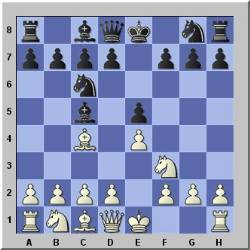Chess Opening Theory Pdf

Contents.Indian Defence 1.Nf6 Black's 1.Nf6 in response to 1.d4 is characteristic of the various 'Indian' defences. Unlike 1.d5, which fights for the center in traditional fashion by occupying it with pawns, Indian systems reflect the hyper modern approach to opening theory. In such openings, Black often allows White to construct a classical pawn center, but then attempts to attack it with pieces and undermine it with timely pawn advances. By delaying the movement of his own central pawns, Black retains a certain degree of flexibility at the cost of ceding the center to White.It should be noted that while 1.Nf6 often leads to Indian systems, transpositions back into other openings such as the Queen's Gambit are not uncommon. As in any opening, both players should remain aware of these possibilities.The main continuation for White is.
Bill Wall 700 Opening Traps INTRODUCTION Probably the most important part of a chess game for the amateur chess player is the opening. At the amateur level, most games are won or lost in the opening through mistakes or falling in a book trap. It is important to study the openings and know what traps and pitfalls may arise from a. Stand is always called the first; thus the square we named White's QB2 or Black's QB7 is now called c2 in both cases. Black's QB2 (White's QB7) is always c7. In capturing, the square on which the capture takes place and not the piece captured is noted, for the sake of uniformity. Epson 4000 adjustment wizard program compatibility.

Holi dj remix songs download mp3 2014. In fact, there are many playable moves at this point, but most of them either transpose back into a typical 2.c4 position or into other more or less orthodox 1.d4 openings. Some lines such as 2.Bg5 may lead to strange positions, but even these may transpose or become similar to other mainstream 1.d4 openings.Hopefully this gives some background as to why 2.c4 is the main move discussed in opening books. Feel free to play 2.Nf3, 2.Nc3, or even 2.c3, 2.Bf4, or 2.Bg5.